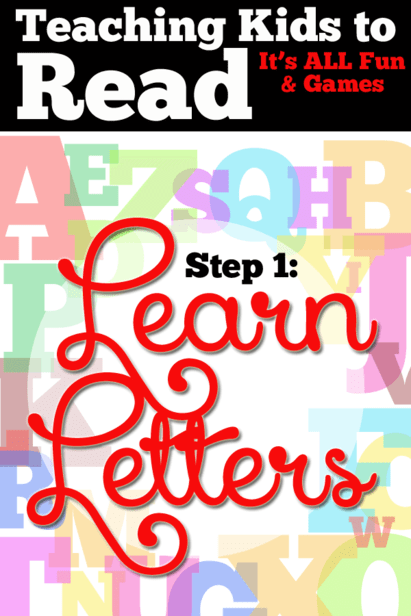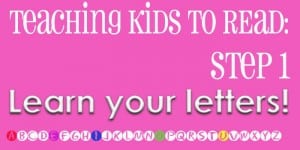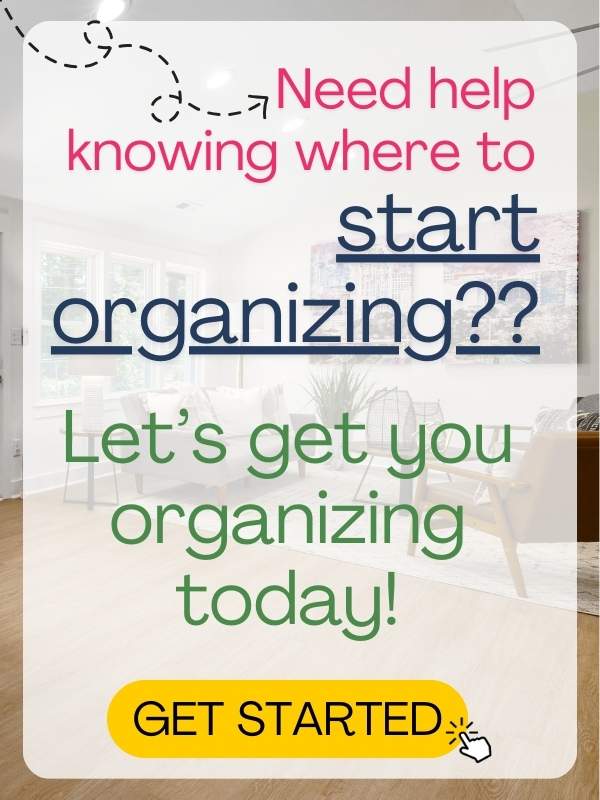Reading isn’t all about squirmy reading on the couch. A lot of it can be REALLY fun — especially teaching letters! Learning sounds phonics can really help move along the reading process!

Here’s a few ideas I’ve had. Hopefully others will give ideas in the comments section!
1. Leapfrog has great letters learning toys. We’ve had the fridge magnet letters for years (just barely gave them away — sniff, sniff). They are a great way to learn while you’re cooking.
2. Letters are EVERYWHERE! Pick a letter each day that you’re going to look for in your travels. Sometimes I’d pick that letter out of a bin of letter beads and make a necklace out of it for them to wear. Then, they could look at the letter and then when they’re out they can scream “MOM, there is a T — just like on my necklace” and then all the other moms can bow to your superior teaching skills. 🙂
3. Sing song. Sing the alphabet song. Since the A says ahhh song, sing them all.
4. I have always started out teaching them the letter name, and THEN what the letter says. I don’t know if this is the “right” way — but it has worked for us. My kids very rarely get confused by the name and the sound.
5. Play the sound out game. Sometimes my kids get really confused by sounding it out. Their little ears just can’t put the letters together (Mr Middle was HORRIBLE at this, I don’t know what the deal was). Anyway, with P we always played the sound out game while we were on walks. At first I did things that she could see like c-aaaah-rrrr or t-r-eeeee. Say the word loud and slow to see if they can figure out what you are saying. Then I advanced to things we weren’t seeing, and then I’d take little breaks between the letters, like they would when sounding it out. Soon she’d play it with me and we had a game of it.
6. Talk about sounds. When we were playing with her kitchen I’d hold up a tomato and say “t-t-t-tomato” and somewhere along the line she’d say T when I said t-t-t. You need to work letter learning into all facets of your life. Luckily, letters ARE in all facets of your life, so it’s not a hard adjustment
7. Flashcards. Ahh, the f word. We’d sit at the table and go through them, and she’d get a jelly bean for every 3 or 4 she got right. There. That’s my dirty little secret. My kids like candy, and I like them learning how to read. We compromise.
8. Read, read, read. Hopefully you started doing this step long ago. Go to the library, find books you will both enjoy. Keep books available. Read, read, read. Several times daily.
So, that’s step one. Teaching them letters. Anyone else have tips? I’m still in primary surrounded by little kids and literacy is REALLY important to me — so the more ideas, the merrier.
* this post was first written on 4/8/13 — you can read the original here.
Check out my other reading steps:
[pt_view id=”53a410496c”]







Lara says
Bria and Chloe both learned their letters as tiny toddlers thanks to the foam bath letters. Those were their favorite toys to play with in the tub and they both (Bria was especially obsessed with letters) knew their alphabet letters before they were 2.
carol cabe says
Hi there,
I have been reading your posts on teaching your kids to read and just wanted to add how important phonological awareness is. I am a pre-k teacher and have also taught Kindergarten. Phonological awareness is all about sounds and manipulating them. Beyond letter sounds and blends you should focus heavily on rhyming, syllables, blending (stretching the sounds apart and putting them back together in a word such as /c/ /a/ /t/ cat) and manipulating sounds such as changing the beginning sound or middle sound, etc. Just something to think about!
Hilary says
Those are great ideas Carole. I think we naturally do that at our house and have a few “games” we play when we change sounds. Good advice for all of us!